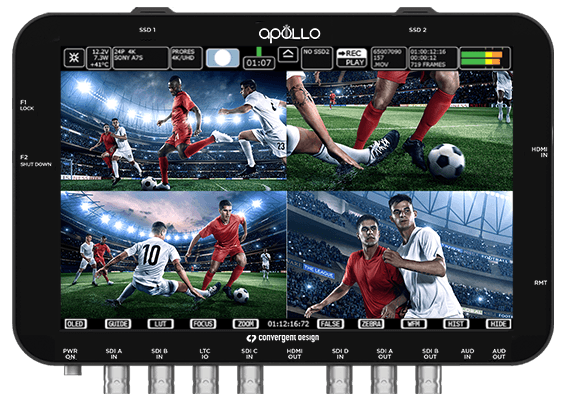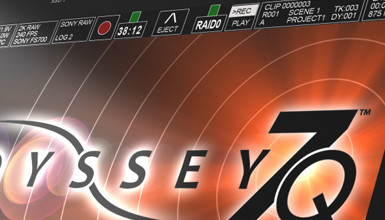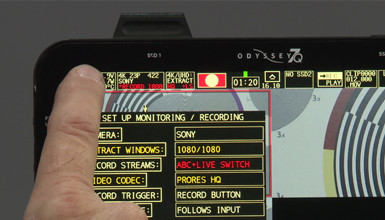
All streams use the same timecode, which means all feeds are inherently synchronized (Genlock is not needed), and all video is recorded to the same onboard media. So instead of four camera cards -- potentially in different codecs or formats from different cameras -- all media is consolidated, which should make offloading and ingest a breeze for post-production. Using a companion app from Convergent Design, each recorded stream can be exported as an individual QuickTime ProRes file or, using a little-known feature of QuickTime, as a single multicamera clip containing all camera streams. These multicam clips will drop right onto the timeline in supported editors like Final Cut Pro X.
The same image analysis tools available in the Odyssey7 series are available in the Apollo, enabling precise camera matching using features like vectorscopes, waveforms, histograms, spot metering, false color, focus peaking and zebras. Since all feeds can be monitored simultaneously on the unit's high-quality OLED display, technical directors will be able to see immediately the effects of any tweaks operators make to their cameras. What's more, a DIT or engineer can apply a preset or custom monitoring LUT, for re-application in post production, to normalize cameras.
Additional features are planned for roll out in 2016: two-channel 4K/UHD video recording; DNxHD recording; and the ability to "cascade," which allows two or three Apollos to be interconnected for up to twelve HD channel or six 4K/UHD channel simultaneous recording.
Apollo is scheduled for release in December 2015. Convergent's list price is $3995 and includes an SSD to USB3 adapter, a 5-pack of SSD mounting handles, and a universal AC power supply. Owners of the Convergent Design Odyssey7Q and Odyssey7Q+ will be able to purchase an Apollo Option for their devices as an upgrade for $1795.
For more information,visit Convergent Design's site: https://www.convergent-design.com/apollo.html
















